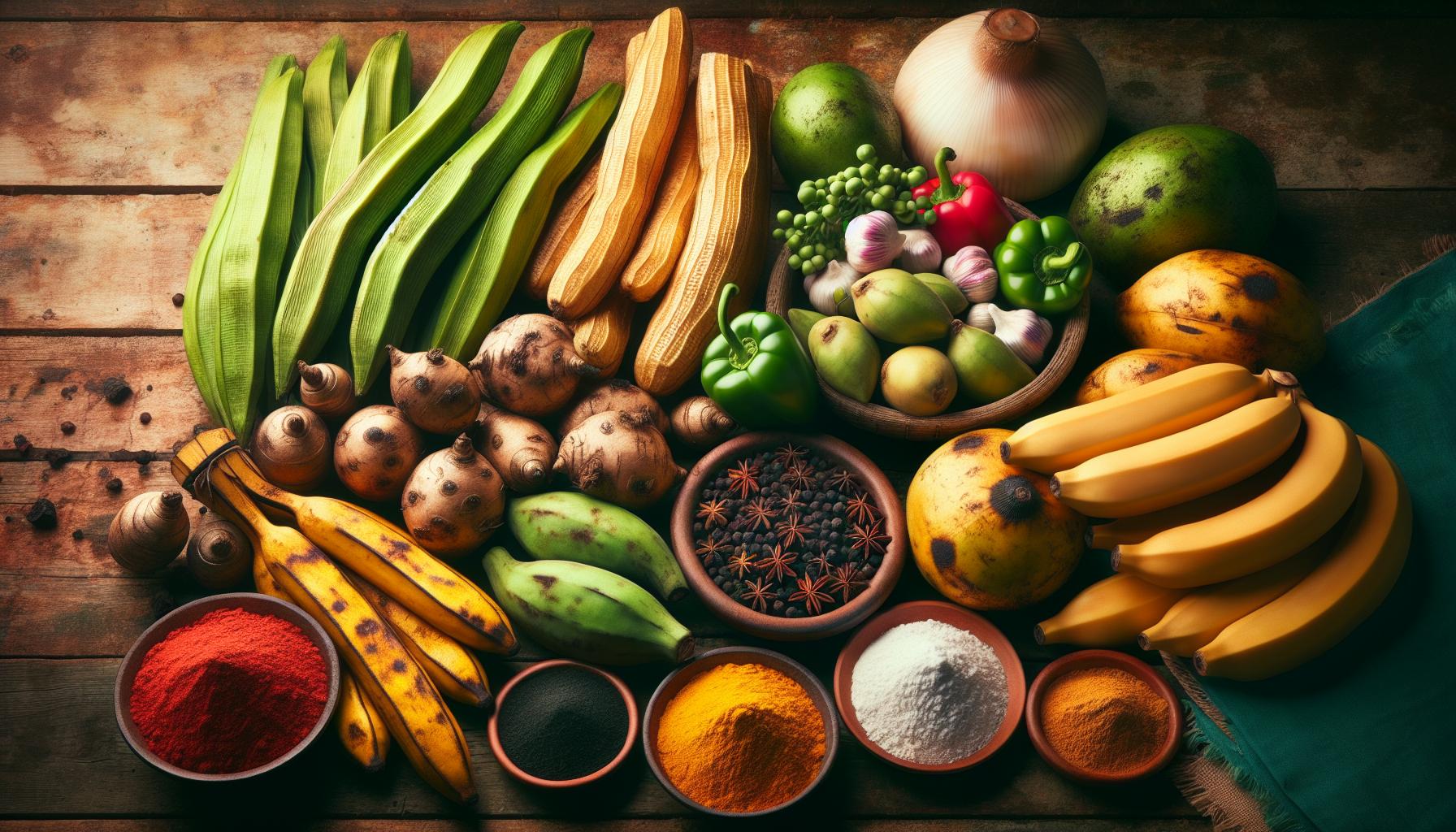From vibrant street markets to family gatherings the Dominican Republic’s culinary scene bursts with flavors that tell stories of its rich cultural heritage. This Caribbean nation’s cuisine blends Spanish African and Taíno influences creating a unique gastonomic experience that’s impossible to resist.
Traditional Dominican dishes pack a flavorful punch with staples like mangú (mashed plantains) la bandera (the flag – a combination of rice beans and meat) and sancocho (hearty seven-meat stew). Each recipe carries centuries of tradition passed down through generations making every meal a celebration of Dominican identity. The secret? It’s not just about the food – it’s about the warmth hospitality and joy that accompany every Dominican dining experience.
Dominican Republic Culture Food
Dominican cuisine embodies centuries of cultural fusion, combining indigenous Taíno practices with Spanish colonial influences and African culinary traditions.
Historical Influences on Dominican Food
The foundation of Dominican cooking traces back to the Taíno people who contributed staples like yuca, corn, and tropical fruits. Spanish colonizers introduced rice, wheat, beef, pork, dairy products, and Mediterranean cooking techniques during the 15th century. African influences brought plantains, okra, taro root, and specific cooking methods like deep frying to the island’s culinary repertoire.
Key historical influences created signature dishes:
- Sancocho traces its origins to Spanish cocido, adapted with local ingredients
- Mangú emerged from African cooking traditions using plantains
- Casabe originated from Taíno cassava bread preparation methods
- La Bandera developed during the colonial period, combining Spanish rice with local beans
Regional Cooking Styles
Dominican regional cuisine varies distinctly by geographical location:
Coastal Regions:
- Fresh seafood dishes like pescado frito
- Coconut-based sauces in stews
- Grilled fish with local herbs
Mountain Areas:
- Hearty meat-based soups
- Root vegetable preparations
- Wild oregano seasoning
Urban Centers:
- Fusion of traditional recipes with modern techniques
- Street food innovations
- International culinary influences
Each region maintains unique preparation methods shaped by local ingredients, climate conditions, and cultural preferences.
Essential Dominican Ingredients and Staples

Dominican cuisine centers on fresh local ingredients that form the foundation of traditional dishes. These essential components create the authentic flavors that define Dominican cooking.
Root Vegetables and Plantains
Root vegetables dominate Dominican cooking, with yuca serving as a cornerstone ingredient in numerous dishes. Green plantains appear in staples like mangú tostones while ripe plantains create sweet maduros. Ñame batata (sweet potato) provides hearty substance to soups stews. The versatile yautía (malanga) adds texture to sancocho contributes to various side dishes. Fresh cassava produces casabe, a traditional flatbread dating back to Taíno cuisine. These starchy vegetables maintain their essential role in daily Dominican meals preparation.
Local Spices and Seasonings
Dominican kitchens feature distinct spice blends that create signature flavors. Sazón completo combines garlic oregano cumin cilantro into a foundational seasoning mix. Fresh lime juice brightens dishes while bitter oranges add depth to marinades. Sofrito, a paste of onions peppers garlic herbs, forms the aromatic base for many recipes. Whole cloves bay leaves star anise infuse rich flavors into slow-cooked dishes. Locally grown culantro (recao) provides an intense herbal note distinct from regular cilantro. These authentic seasonings create the characteristic taste of Dominican dishes.
Popular Dominican Main Dishes

Dominican main dishes showcase hearty combinations of rice, beans, meat, and vegetables that reflect the country’s diverse cultural heritage and agricultural abundance.
La Bandera Dominicana
La Bandera Dominicana serves as the national dish of the Dominican Republic, representing the colors of the Dominican flag through its components. This iconic meal consists of white rice, red kidney beans stewed in a savory sauce (habichuelas guisadas), and braised meat (typically chicken or beef). Fresh salad, sweet plantains (plátanos maduros), and avocado complement the main components. Local restaurants serve variations of La Bandera with different protein options including goat, pork, or fish. Each component undergoes careful preparation with distinctive seasonings like oregano, garlic, cilantro, and sazón.
Traditional Meat Preparations
Dominican meat dishes feature distinctive cooking techniques that maximize flavor through slow-cooking methods. Pollo guisado combines chicken pieces braised in a tomato-based sauce with bell peppers, onions, and traditional spices. Chivo liniero presents slow-roasted goat meat marinated in bitter oranges, garlic, and Dominican orégano. Chicharrón features crispy pork belly with perfectly rendered fat and crackling skin. Carne guisada transforms tough cuts of beef into tender morsels through long simmering with aromatic vegetables and herbs. These preparations commonly include adobo seasoning, a blend of garlic, oregano, black pepper, and sour orange.
Street Food Culture in Dominican Republic

Dominican street food reflects the country’s culinary ingenuity through portable versions of traditional dishes sold by vendors at market stalls street corners throughout cities towns. Local street food culture emphasizes affordable tasty bites that showcase authentic Dominican flavors.
Popular Street Snacks and Treats
Street vendors serve quipes (deep-fried bulgur wheat rolls filled with spiced beef) influenced by Middle Eastern immigrants. Yaroa combines layers of french fries or plantains topped with seasoned ground meat melted cheese sauce. Pica pollo (Dominican-style fried chicken) comes crispy seasoned with lime garlic oregano. Chimis (Dominican hamburgers) feature cabbage sauce packed into soft pan de agua rolls. Empanadas contain savory fillings like chicken beef cheese sealed in crispy corn flour dough. Sweet treats include churros dusted with cinnamon sugar dulce de leche filled pastries. Local vendors sell fresh fruit cups sprinkled with lime salt combining tropical flavors like pineapple mango papaya.
| Popular Street Food | Main Ingredients |
|---|---|
| Quipes | Bulgur wheat, ground beef, spices |
| Yaroa | French fries/plantains, meat, cheese |
| Pica Pollo | Chicken, lime, garlic, oregano |
| Chimis | Ground meat, cabbage, pan de agua |
| Empanadas | Corn flour, meat/cheese filling |
Dominican Dining Customs and Etiquette
Dominican dining customs reflect deep-rooted cultural values centered around family togetherness hospitality. Traditional dining practices emphasize respect warmth sharing across generations.
Family Meals and Social Gatherings
Dominican families gather daily for la comida (lunch), the largest meal served between 12 PM and 2 PM. Extended family members regularly join weekend lunches that stretch into late afternoon conversations. Grandparents occupy seats of honor at the table while children learn proper dining manners through observation.
Social gatherings feature specific customs:
- Hosts serve food to guests first starting with elders
- Multiple servings get offered as a sign of hospitality
- Guests bring desserts or drinks to share
- Tables remain set until everyone finishes eating
- Animated discussions continue long after meals end
Common gathering occasions include:
| Event | Typical Time | Main Dishes |
|---|---|---|
| Sunday Lunch | 1-4 PM | Sancocho, La Bandera |
| Holiday Dinner | 6-10 PM | Pasteles en Hoja, Pernil |
| Birthday Meals | 2-6 PM | Asopao, Arroz con Leche |
- Learning to properly greet arriving guests
- Helping set prepare tables before meals
- Waiting for elders to begin eating
- Requesting permission to leave the table
Sweet Treats and Desserts
Dominican desserts showcase a delightful fusion of tropical ingredients with Spanish-influenced confectionery techniques. These sweet creations celebrate the island’s abundance of fresh fruits mixed with traditional cooking methods.
Tropical Fruits in Dominican Sweets
Native Dominican fruits take center stage in local desserts through creative preparations. Fresh mangoes transform into smooth dulce de mango while ripe guava becomes rich pasta de guayaba. Local coconuts provide the base for tembleque, a silky coconut pudding topped with cinnamon. Papaya combines with milk candies to create the beloved dulce de lechosa. Fresh pineapple glazed in brown sugar creates piña en almíbar, offering a balance of sweet and tart flavors. Street vendors sell habichuelas con dulce, a creamy sweet bean dessert featuring coconut milk, sweet potato chunks, raisins and warm spices like cinnamon and cloves.
| Popular Fruit Desserts | Main Ingredients |
|---|---|
| Dulce de Mango | Ripe mangoes, sugar, cinnamon |
| Pasta de Guayaba | Fresh guava, sugar |
| Tembleque | Coconut milk, cornstarch, cinnamon |
| Dulce de Lechosa | Green papaya, milk, spices |
| Piña en Almíbar | Pineapple, brown sugar, vanilla |
Dominican cuisine stands as a testament to the nation’s rich cultural heritage and vibrant spirit. Through its diverse array of dishes traditional cooking methods and unique flavor combinations this Caribbean cuisine continues to captivate food lovers worldwide. The blend of Taíno Spanish and African influences has created a culinary landscape that’s both distinctive and deeply rooted in history.
From hearty home-cooked meals to vibrant street food and delectable desserts Dominican food culture exemplifies the warmth and hospitality that defines the Dominican people. It’s more than just sustenance – it’s a celebration of family tradition and the joy of sharing meals together.

